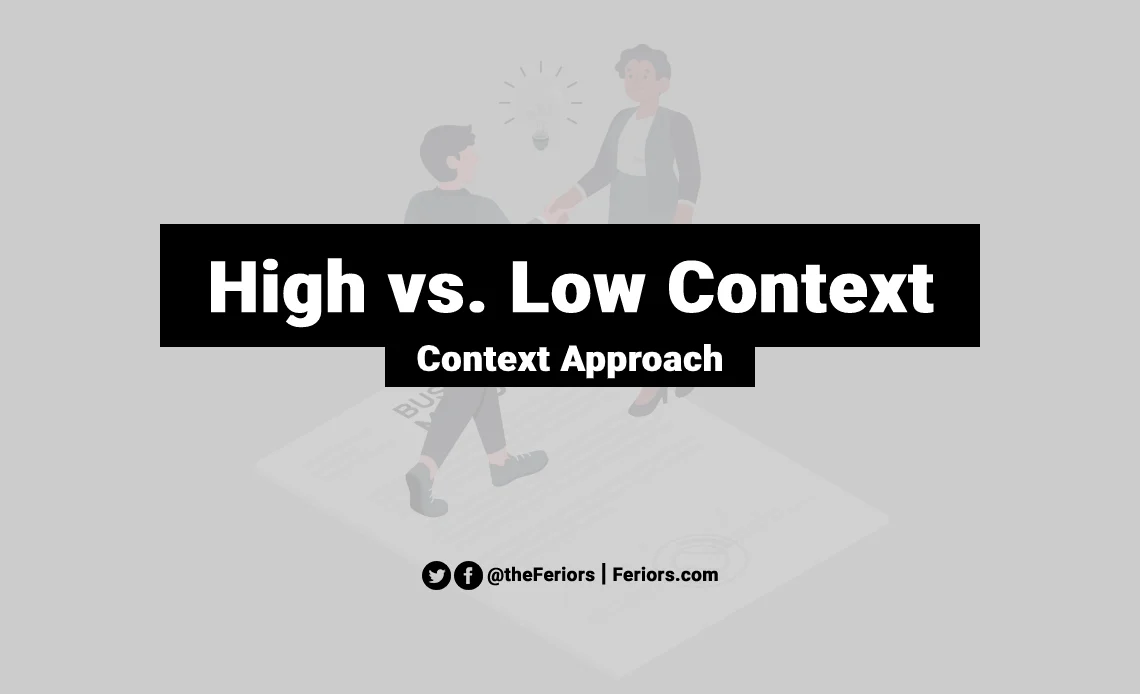Imagine yourself attending a business meeting in a foreign country. You’ve prepared your presentation, meticulously crafted your arguments, and are confident in your expertise. But then, something unexpected happens: your carefully structured pitch seems to fall flat. The individuals you’re meeting with are silent, their faces impassive. It feels like a communication breakdown, a disconnect that leaves you baffled and frustrated.

Image: helpfulprofessor.com
This experience, unfortunately, isn’t uncommon in a globalized world where cultural differences can significantly impact communication, business relationships, and even personal interactions. The reason for this disconnect often lies in the contrasting communication styles of high-context and low-context cultures. Understanding these differences is essential for navigating the nuances of these cultures, fostering meaningful connections, and achieving successful outcomes in both our personal and professional lives.
Unveiling the Secrets of High-Context and Low-Context Cultures
High-context and low-context cultures represent fundamental distinctions in communication styles and understanding. These styles are deeply rooted in a society’s historical, social, and cultural fabric, shaping how people interpret meaning, communicate information, and build relationships.
High-Context Cultures: Where Meaning Resides in the ‘Unsaid’
High-context cultures are characterized by a strong emphasis on nonverbal cues, shared history, and implicit understanding. In these cultures, meaning is often conveyed through subtext, unspoken gestures, and an awareness of social hierarchies. Think of high-context communication like a game of charades, where understanding depends on shared knowledge and a sense of collective history.
- Emphasis on non-verbal cues: In high-context cultures, facial expressions, body language, and tone of voice are vital for conveying meaning. A raised eyebrow, a subtle nod, or a hesitant silence can speak volumes more than words.
- Importance of relationships: Building trust and rapport is paramount in high-context cultures. Long-standing relationships are crucial for communication, and decisions are often influenced by social connections and personal ties.
- Emphasis on context: High-context communication relies heavily on understanding the social context and cultural nuances of a situation. Shared experiences and cultural knowledge are essential for interpreting messages and responding appropriately.
Low-Context Cultures: Directness and Explicitness Reign
In contrast, low-context cultures prioritize explicit communication, clarity, and directness. Meaning is heavily reliant on verbal language, with less emphasis on unspoken cues and shared history. In low-context societies, communication is like a clear map, where every detail is spelled out explicitly.
- Directness: Low-context cultures value straightforwardness and clarity. They prefer direct communication, avoiding ambiguity and indirect interpretations.
- Emphasis on verbal language: The primary means of communication is through clear and concise language. Meaning is conveyed through explicit statements and detailed explanations.
- Individualism: Low-context cultures often emphasize individualistic values, where personal achievements and independence are highly valued. Communication tends to be more assertive and direct, reflecting a focus on individual perspectives.

Image: feriors.com
Navigating the Communication Landscape: Understanding Cultures Beyond the Textbook
While these distinctions provide valuable insight, the reality of cultural communication is far more nuanced. Cultures are not monolithic entities; they are diverse and dynamic, with individual variations and overlapping elements.
For example, a society predominantly classified as high-context may exhibit certain low-context characteristics in specific situations or professional settings. Additionally, the level of context can depend on factors like the age, social status, and gender of the individuals involved.
Building Bridges Across Cultural Divides: Key Strategies for Success
Despite the complexities, understanding these distinct communication styles can be immensely valuable for navigating our increasingly interconnected world. Here are practical strategies for fostering effective communication across cultural divides:
- Practice active listening: Pay close attention to both verbal and nonverbal cues. Seek clarification when needed, and demonstrate your willingness to understand different perspectives.
- Embrace patience and humility: Understand that cultural differences can lead to misunderstandings. Be patient with yourself and with others, acknowledging that communication takes time and effort.
- Seek opportunities for cross-cultural exchange: Engage with individuals from diverse backgrounds, learning about their cultures firsthand. Develop empathy and cultivate an openness to different ways of thinking and relating.
- Cultivate emotional intelligence: Develop your ability to recognize and respond to the emotions of others. This skill is essential for building trust and fostering understanding, regardless of cultural backgrounds.
High-Context Versus Low-Context Cultures
The Future of Communication: Embracing Cultural Nuances in a Global World
Understanding high-context and low-context cultures is no longer just a matter of academic curiosity; it’s a necessity for success in a globalized world. As our lives become increasingly interconnected, navigating cultural differences effectively is critical for building meaningful relationships, fostering successful business partnerships, and contributing to a more inclusive and harmonious society. By embracing these distinctions, we can move beyond stereotypes and cultivate cross-cultural understanding, enriching our lives and expanding our horizons.






